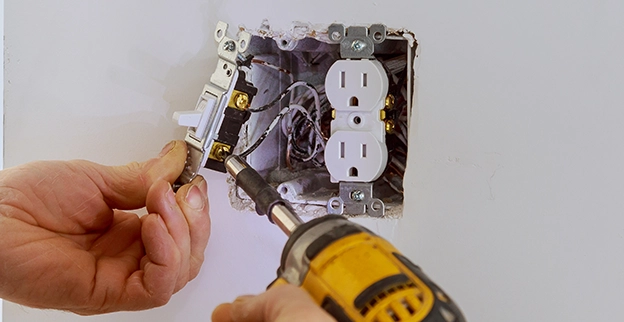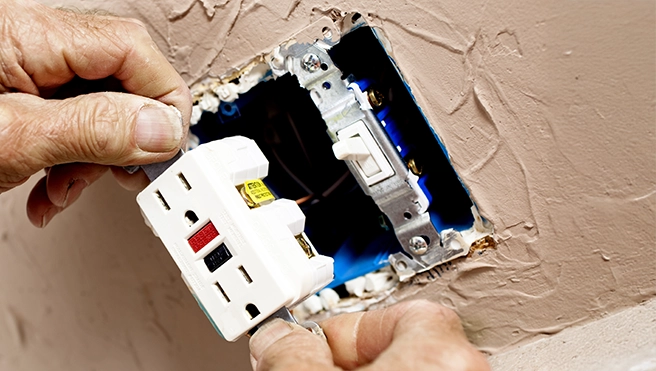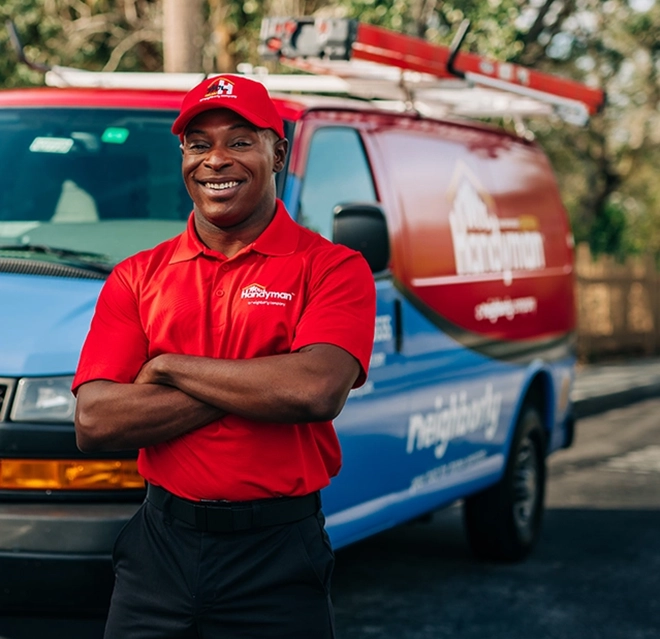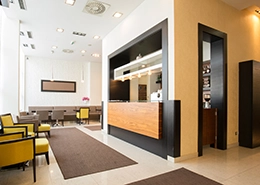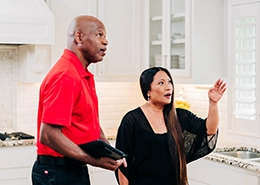Each house is unique, but what remains the same among all buildings is that the wiring that runs through the walls and/or ceiling must be installed the right way in order to be safe and effective. Wiring an outlet requires connecting it to the breaker box, or the centralized location where the electricity provided by the city is distributed throughout the house.
Sometimes, multiple outlets can be grouped together into the same circuit, but it’s also possible to create an independent outlet that isn’t connected to anything else. It’s useful to have multiple outlets on the same circuit because you don’t need to take up space in your breaker box for each individual plug. At the same time, some people want an outlet to be all by itself, usually because they want it to be a different type than the others in the home. Mr. Handyman can install electrical outlets that serve your purposes, help you understand which options are best for you, and offer advice on where to place them!
Signs You Might Need New Outlets or Repairs
Many homes have relied on the same outlets for years—maybe even the original ones that were installed when the home was built! Given enough time and use, outlets can start to wear out. This is not just a problem because it’s annoying when a device flickers or the plug keeps popping out; it’s also hazardous because people might get shocked, and bad outlets can start a fire.
If you’re not sure whether your outlets could use some repairs, some signs to watch out for include:
- Circuits that keep tripping and require a reset
- Unusual smells, even if they don’t smell smoky (they often smell like ozone)
- Outlets that are warm to the touch
- Sounds such as squealing or popping
- Outlets that aren’t attached firmly to the wall
- A lack of safety features, such as a grounding wire
Of course, you might also want to replace or install outlets because your needs have changed or the house is older! These are also perfectly viable reasons.
Outlet Types
Once you’ve determined that you’d like to replace or add an outlet, the next step is to decide what kind. A few of the most common options are:
- Duplex receptacle – The standard outlets you see most of the time that have two spaces for plugs
- Single receptacle – Outlets that only have one plug; usually, these are meant for specific devices like refrigerators that limit the user’s ability to reach to plug more things in
- Tamper-resistant outlets – For homes with kids and pets, these outlets have built-in protectors that prevent items from being inserted into the plug slots
- USB outlets – Nowadays, many people want their outlets to accept not just plugs but also USB cables for device charging
- Switch outlets – For people who want to leave devices plugged in all the time but only have them draw power sometimes, these can be turned on and off with a light switch
- Weatherproof outlets – Meant for use outside or in areas like indoor pools where water is a concern
If you’re not sure which type of outlet is best for your specific project, Mr. Handyman can provide some suggestions!
